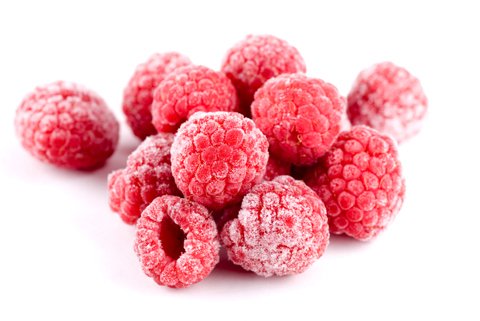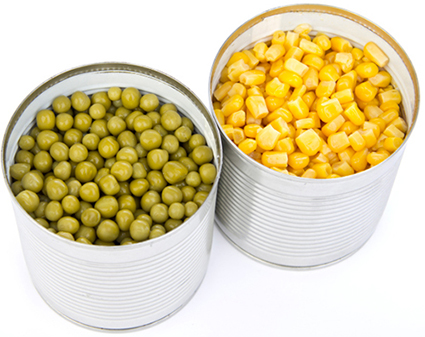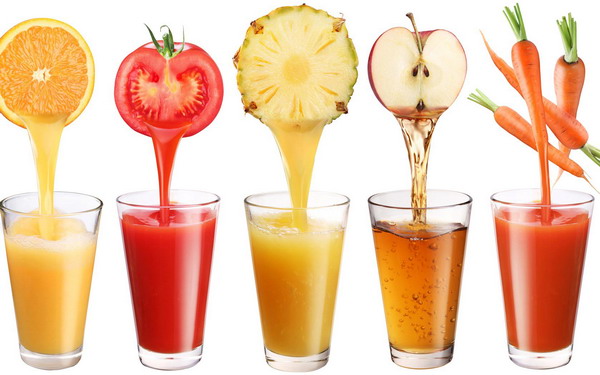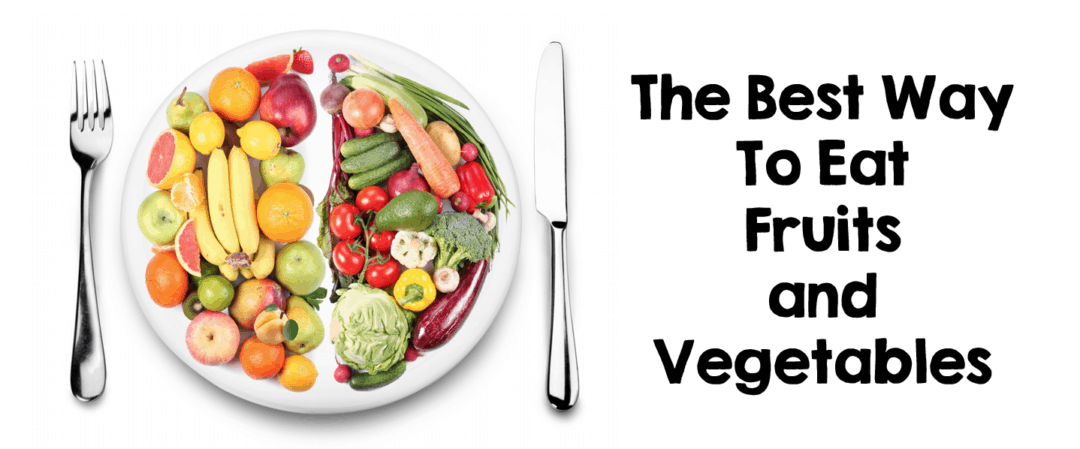This article was previously featured on Grandparents.com
Did you know, that according to the CDC, fewer than one-third of Americans eat the recommended servings of fruits and vegetables each day? It's important that you pay attention to not only how many fruits and vegetables are in your diet, but also, what type. Here are our recommendations when it comes to the best way to eat fruits and vegetables!
THE BEST WAY: Fresh, local grown produce
 Farmer’s market? Yes please! Fresh produce is usually preferable to frozen and canned fruits and veggies, but those grown within a 100-mile radius of your home are ideal, because they’re picked in-season at the height of ripeness, when nutrients are at their peak. Farmers allow their produce to fully ripen prior to bringing it to market, while most large-scale conventional farming operations are essentially forced to harvest produce early, in order for it to withstand damage or spoilage in transit to its destination. This premature picking is detrimental to a food’s overall micronutrient value. In both cases—farmer's market and grocery store foods—organic is usually a better choice, as there are over 400 chemical pesticides routinely used in conventional farming.
Farmer’s market? Yes please! Fresh produce is usually preferable to frozen and canned fruits and veggies, but those grown within a 100-mile radius of your home are ideal, because they’re picked in-season at the height of ripeness, when nutrients are at their peak. Farmers allow their produce to fully ripen prior to bringing it to market, while most large-scale conventional farming operations are essentially forced to harvest produce early, in order for it to withstand damage or spoilage in transit to its destination. This premature picking is detrimental to a food’s overall micronutrient value. In both cases—farmer's market and grocery store foods—organic is usually a better choice, as there are over 400 chemical pesticides routinely used in conventional farming.THE RUNNER UP: Frozen

Frozen fruits and veggies are more likely to be picked at their peak of ripeness, when they are at their most micronutrient dense, which means iced foods often start out with higher levels of micronutrients than their fresh non-local counterparts. Even better, they retain those nutrients for up to a year in your freezer. However, before they’re flash-frozen, fruits and vegetables must be blanched (briefly boiled), a process during which some health benefits are inevitably lost. This is where the micronutrient content of many of the water-soluble vitamins are reduced by an average of 20 to 60 percent. Furthermore, loss of antioxidants (which are needed to fight free radicals) also occurs. Still, frozen is a solid choice for those looking to pack in the produce. For the healthiest frozen foods, look for bags with zero or minimal added ingredients, including salt, sugar, or artificial colors.
A GOOD CHOICE: Canned

Like frozen produce, canned fruits and vegetables are usually harvested at the height of ripeness/nutrient content, and then blanched before being packaged, meaning they lose some water-soluble nutrients, like vitamins B1 and C. However, certain canned foods actually benefit from the process. For example, the amount of lycopene (a phytochemical said to help prevent cancer) in tomatoes actually increases when they’re canned. Similarly, canned carrots and pumpkin benefit from a boost in beta carotene, a carotenoid and antioxidant important to immunity.
One curveball in the canned goods game: The presence of Bisphenol A, also known as BPA, a plastic additive used in food packaging that’s been linked to cancer and endocrine issues, among other illnesses. BPA is especially good at leaching into canned foods that are acidic, salty, or fatty, such as coconut milk, tomatoes, canned fish, soup, and vegetables. Always purchase BPA-free canned goods to avoid potential health pitfalls. (You can read more about how to avoid BPA here.)
GOOD and BAD: Good for micronutrients- bad for sugar levels

The age-old preservation method of drying comes with a multitude of benefits, including long shelf life, high fiber content, and lots of nutrients retained after the drying process.
Of course, there are a few drawbacks.
- Rehydration, particularly of certain veggies, can take awhile, making dried food a bit less convenient than frozen, fresh, or canned.
- With vegetables, some vitamins and minerals are lost during that lengthy drying process, while others, like thiamin and niacin, are diminished during rehydration. (Tip: Re-use the rehydration liquid during cooking to get those minerals back.)
- Dried fruits contain significantly more calories than regular fruits by volume, meaning one cup of dried mango has many more calories than one cup of fresh mango. Subsequently, it’s important to watch how much you’re eating. They can really wr
Still, dried produce is a good addition to your diet, as long as you’re supplementing with fresh fruits and veggies, as well.
DEPENDS: Juice

Though store-bought juices can contain important vitamins and minerals—Tropicana Orange Juice includes vitamin C, folate, and potassium, for example—many are loaded with extra sugar, diluted with water, and crammed with artificial ingredients, making them inefficient methods of increasing your produce intake. If you must buy supermarket juice, the gold standard is ‘100 percent juice, because it most likely contains fewer additives. However, there is no guarantee that it isn’t watered down, or that citric acid or artificial flavors or colors have not been added in. On the other hand, juicing—in which you make your own juice from a variety of fresh produce at home—effectively packs a ton of crucial micronutrients into the average diet without needless additives. The comparatively few drawbacks include dubious health claims (like “detoxing”), lack of fiber (left behind when the pulp is removed), and high calorie content if you opt for too many fruits and too few vegetables. To avoid these pitfalls and maximize health benefits, read up before you buy that blender.











